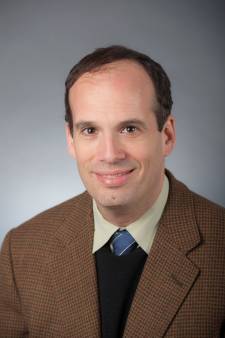Providence Business News, April 8, 2013 — Richard Asinof
Posted to smarthealthit.org with permission
One of the big missing pieces in the build out of the health IT infrastructure now underway as part of health care reform is the development of an underlying programming interface system that will allow for the creative introduction of downloadable apps, similar to what smart phone users can employ.
Dr. Kenneth D. Mandl, a physician and researcher in the Boston Children’s Hospital Informatics Program, where he directs the hospital’s Intelligent Health Laboratory, has been working with software developers to bridge that gap and create apps that allow interface with electronic health records (EHRs), both proprietary and open source.
Providence Business News asked Mandl, who is also an associate professor at Harvard Medical School, to talk about what his team has been able to accomplish so far.
PBN: What barriers do you face in your efforts to develop apps and create a toolkit that will enable innovative software developers to integrate apps into the many different brands of health IT software platforms?

(photo courtesy Boston Children’s Hospital)
MANDL: Right now, EHRs are difficult to modify. We are working on a project called SMART Platforms, to create an “App Store for Health.” We want users of any EHR to be able to choose and download a new app developed by a third party, and just as easily substitute it for another. So, we have developed, for use across the health care ecosystem, a common application programming interface, or API, so that apps can access health data in a universal, predictable and consistent manner. The iPhone is a great example of this approach. The iOS API has enabled more than 800,000 apps to be developed by software developers who don’t work directly with Apple in any way.
We want EHRs to function as iPhone-like platforms. That way, innovators can distribute their software to doctors and patients everywhere, just as easily as can the developers of “Angry Birds.” And further, innovators can compete with each other on price, quality, value, and usability.
We have made major progress on two fronts. Our project is still in its second year; nonetheless, we actually have the system running on two different proprietary EHR systems as well as several open source EHR systems. We have demonstrated that it is technically feasible and straight forward to layer the API even on existing EHRs.
In addition, we have adapted an EHR data platform called i2b2 that is currently deployed across 84 academic medical centers, to run our SMART apps.
The next step is broader adoption of the SMART API, so that an app built once can run everywhere.
PBN: Can you give an example of how this has changed the delivery of medicine at Boston Children’s Hospital?
MANDL: Here’s an example. At Boston Children’s Hospital we approached group of users, cardiologists and nephrologists, who needed better tools to monitor blood pressure in children with high blood pressure. The clinicians needed to be able visualize blood pressure over time and to adjust blood pressure measurements for age, but the EHR didn’t provide that kind of user interface.
In a period of just six weeks, working to the specifications of these doctors, we created an app that did what the doctors asked.
It’s an app that will run on any health IT system that employs the SMART Platforms API. It is now used inside of the Cerner EHR by our docs hundreds of times per week.
And the blood pressure app will run anywhere that has the SMART API.
PBN: In Rhode Island, there appear to be two separate, parallel tracks of health IT build-out – those that are targeting the large, prestigious academic medical centers, and those that are working with community health centers. Will they converge? How important a role will apps play in such a convergence?
MANDL: Health information exchanges are addressing the issue of moving data between sites of care—including between academic medical centers and community health settings.
What SMART Platforms enables is for the same apps to run in both settings, or for apps better adapted for one setting or the other be substituted. For instance, an app for monitoring a liver transplant, would rarely be used in a community health center setting. The ability to share functionality and data across diverse institutions, regardless of size, is key, and apps will play a big role.
PBN: What role can consumers play in changing the traditional dynamic of health care, i.e., the doctors talk and the patients listen, in the emerging world of health IT?
MANDL: Apps can help engage consumers. For example, apps displaying data in an accessible, user-friendly way can promote a conversation between patients and providers.
These apps can enable patients to become more empowered and more involved in their own care.
The SMART universal app platform allows us to build that kind of functionality and cross the divide between patient- and provider-facing IT. It allows a patient’s data to be accessible at the point of care – by both the patient and the provider.
PBN: Do large proprietary health IT systems present a challenge to the deployment of apps?
MANDL: Most EHR systems don’t have any programming interfaces that allow substitutable applications.
By adopting SMART, even diverse proprietary EHRs can run apps that are built one time, and then run anywhere. With the common, universal SMART Platforms API, we can change the health IT systems in a nimble way and at scale. And enable the App Store for Health.
You must be logged in to post a comment.